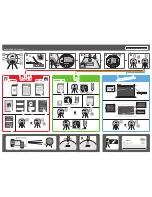
T o u c h g e n e G r a d i e n t O P E R A T O R ’ S M A N U A L
PAGE 33
TOUCHgene program
30/11/98
14:27:25
System Configuration.
System Version
:
0.49 1.00
Unit Serial No.
:
88192/01
Last System test
:
19/11/1998 09:34:24
Program
:
DEPT PROGRAM
Date last edited
:
12/10/1998 22:46:11
Data Log File
:
NORMAN
Event
Date & Time
Func
Cycle Step
Temp
Set
Ramp
Point
Rate
Program
30/11/1998 14:27:26
Ramping
30/11/1998 14:27:26
01
01
01
4.0
°
C
4.0
°
C
MAX
°
C/m
Holding
30/11/1998 14:27:51
01
01
01
6.3
°
C
4.0
°
C
Ramping
30/11/1998 14:37:52
02
01
01
4.0
°
C
95.0
°
C
MAX
°
C/m
Holding
30/11/1998 14:38:29
02
01
01
88.1
°
C
95.0
°
C
Ramping
30/11/1998 14:38:59
02
01
02
95.0
°
C
55.0
°
C
MAX
°
C/m
Holding
30/11/1998 14:39:26
02
01
02
59.2
°
C
55.0
°
C
Ramping
30/11/1998 14:39:56
02
01
03
55.0
°
C
72.0
°
C
MAX
°
C/m
Holding
30/11/1998 14:40:05
02
01
03
65.5
°
C
72.0
°
C
Ramping
30/11/1998 14:41:05
02
02
01
72.0
°
C
95.0
°
C
MAX
°
C/m
Holding
30/11/1998 14:41:16
02
02
01
88.5
°
C
95.0
°
C
Signed:
Typical Data Log Printout
Data Log
:
NORMAN
Program Name :
DEPT PROGRAM
Time Started
:
30/11/1998 14:27:26
Temperature (
°
C)
0
10
20
30
40
50
60
70
80
90
Time (m) 0
5
10
20
Typical Graph from a Data Log
A printed profile is 80 columns wide and uses only standard characters in the ASCII range 1 to 127: thus
all common dot matrix, pin fed, continuous stationery printers can be used.
An example of a typical printed profile is shown here:
Note the following:
•
The second line shows the block type detected and the software version number.
•
At the start of each cycle, the cycle number is shown.
•
The start time is the time according to the real time clock in the unit.
•
The Rate is prefixed with either a ‘+’ or ‘-’ to indicate a heating (+) or cooling (-) segment.









































